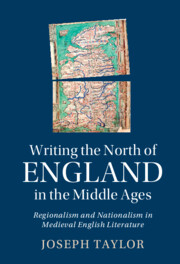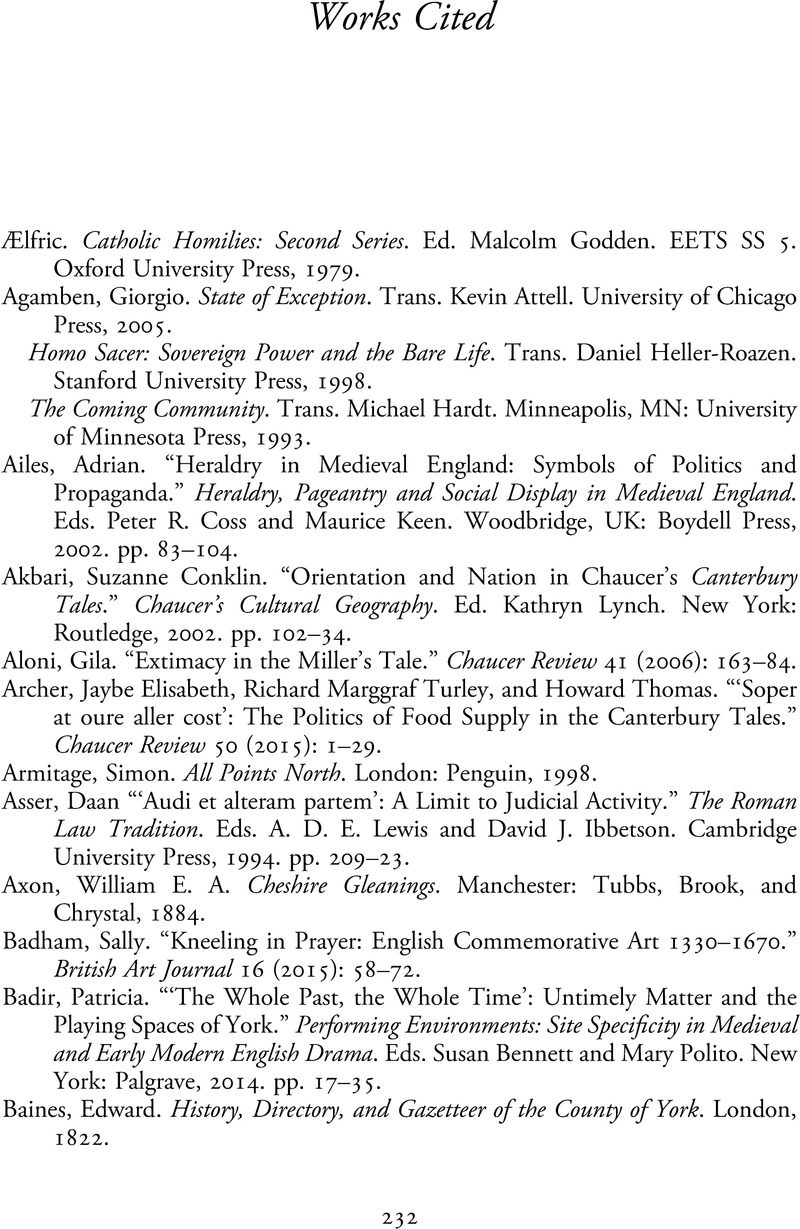 Writing the North of England in the Middle Ages
Writing the North of England in the Middle Ages Book contents
- Writing the North of England in the Middle Ages
- cambridge studies in medieval literature
- Writing the North of England in the Middle Ages
- Copyright page
- Dedication
- Contents
- Acknowledgments
- Chapter 1 Introduction: Region and Nation in England’s North–South Divide
- Chapter 2 William of Malmesbury, Bede, and the Problem of the North
- Chapter 3 The North–South Divide in the Medieval English Universities
- Chapter 4 Chaucer’s Northern Consciousness in the Reeve’s Tale
- Chapter 5 Centralization, Resistance, and the North of England in A Gest of Robyn Hode
- Chapter 6 The Towneley Plays, the Pilgrimage of Grace, and Northern Messianism
- Chapter 7 Conclusion: A Medieval and Modern North–South Divide
- Notes
- Works Cited
- Index
- Cambridge Studies in Medieval Literature
- References
Works Cited
Published online by Cambridge University Press: 08 December 2022
- Writing the North of England in the Middle Ages
- cambridge studies in medieval literature
- Writing the North of England in the Middle Ages
- Copyright page
- Dedication
- Contents
- Acknowledgments
- Chapter 1 Introduction: Region and Nation in England’s North–South Divide
- Chapter 2 William of Malmesbury, Bede, and the Problem of the North
- Chapter 3 The North–South Divide in the Medieval English Universities
- Chapter 4 Chaucer’s Northern Consciousness in the Reeve’s Tale
- Chapter 5 Centralization, Resistance, and the North of England in A Gest of Robyn Hode
- Chapter 6 The Towneley Plays, the Pilgrimage of Grace, and Northern Messianism
- Chapter 7 Conclusion: A Medieval and Modern North–South Divide
- Notes
- Works Cited
- Index
- Cambridge Studies in Medieval Literature
- References
Summary

- Type
- Chapter
- Information
- Writing the North of England in the Middle AgesRegionalism and Nationalism in Medieval English Literature, pp. 232 - 250Publisher: Cambridge University PressPrint publication year: 2022


